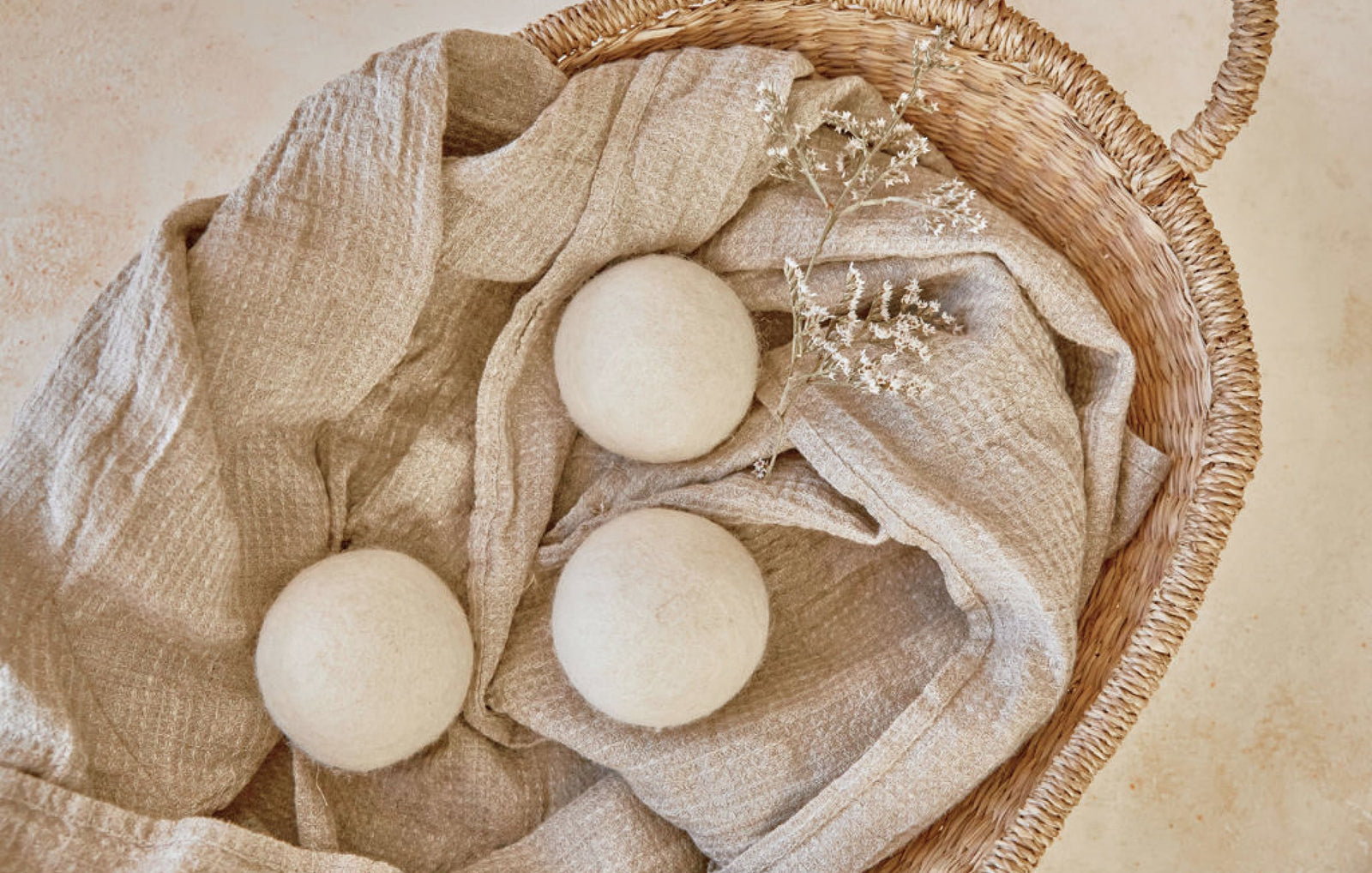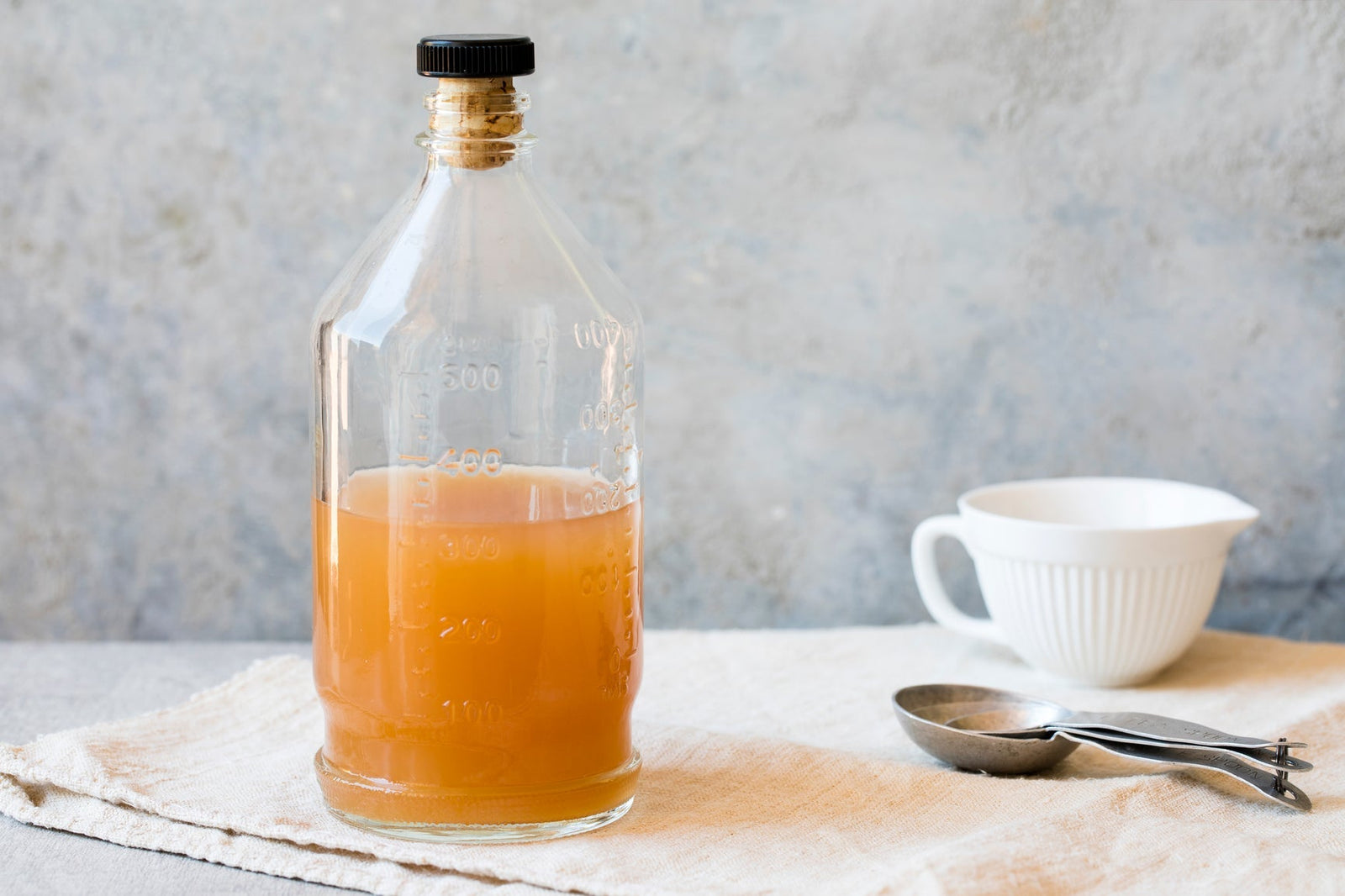Wool vs. Plastic Dryer Balls: Why the Difference Matters | Branch Basics

It may seem like a small thing, but replacing chemical-laden fabric softener and dryer sheets with dryer balls is one of the best things you can do to create a healthier home.
Dryer balls are reusable, affordable, work amazing to reduce static and wrinkles, do not contain harmful laundry chemicals and are super easy to use.
The only confusing thing about them is, which should you choose? Wool or plastic?
In this article, we’ll compare the benefits and downsides of wool versus plastic dryer balls, how to use them, and how they compare to dryer sheets.
Wool Dryer Balls vs. Plastic Dryer Balls: Key Takeaways
Wool and plastic dryer balls both have their merits, including:
- They reduce drying time by increasing space between clothes, towels, sheets, etc.
- They’re both re-usable for at least 1000 washes (2-5 years depending on your household laundry needs)
- They do not contain common synthetic laundry chemicals such as fragrance, phthalates, benzyl acetate, artificial colors, chloroform, dichlorobenzene, benzyl alcohol, methylisothiazolinone, Quats, and VOCs (volatile organic compounds)
- They reduce wrinkles
- They’re affordable compared to dryer sheets and/or fabric softener
- They soften clothes
- They leave no chemical residue on clothes or your dryer
You’ll reap substantial benefits and feel good knowing you’re keeping more waste, plastic, and synthetic chemicals out of your home and the environment when you choose wool dryer balls
Wool Dryer Balls
Wool dryer balls are favored over plastic for performance and sustainability.
This is why we created our own Wool Dryer Balls from sustainably sourced sheep.
Here’s a run-down on the benefits and drawbacks of wool dryer balls.
Benefits
- Reducing drying time by fluffing up fabrics and absorbing moisture
- Reducing static
- Free from harmful synthetic laundry chemicals
- Reducing lint
- Grabbing pet hair
- Maintaining the integrity of fabrics
- Reducing energy expenditure with shorter drying times
- Freshens clothes
- Helps keep clothing untangled during the drying process
- Helps fluff down quilts, sleeping bags, and outerwear
- Economical, one set will last at least 1000 washes, up to 3-5 years
- Will not leave a residue on fabrics
Downsides
- Wool dryer balls may not last quite as long as plastic, although sometimes the opposite is true
- Not all wool for dryer balls is sustainably or humanely sourced
- Synthetic fabrics are prone to static cling. When drying synthetics, adding a safety pin attached to the dryer balls helps. Adding a wash rag sprayed with vinegar to a dryer full of synthetics is also helpful.
To learn more about where we source the sustainable wool for our Dryer Balls, see: Wool Dryer Balls- Gift From The Happiest Sheep To You
Plastic Dryer Balls
Plastic dryer balls are popular and share many of the same benefits as wool.
However, given they are made of plastic and will therefore eventually end up in the trash, we recommend wool.
That said, we’d definitely recommend using plastic dryer balls versus dryer sheets or fabric softener.
Benefits
- Reduce drying time by fluffing up fabrics
- Free from harmful synthetic laundry chemicals
- Reduce static
- Maintain the integrity of fabrics
- Reduce energy expenditure with shorter drying times
- Freshen clothes
- Help keep clothing untangled during the drying process
- Help fluff down quilts, sleeping bags, and outerwear
- May slightly outlast wool, but this depends on the product’s quality
- Will not leave a residue on fabrics
Downsides
- Plastic dryer balls will not absorb moisture
- They are noisier than wool dryer balls
- Do not grab pet hair
- Do not reduce lint
- Are not biodegradable
- May degrade in the dryer causing microplastics to settle on clothing, which end up in the home and outside environment
- Depending on the quality, they may not last as long as wool dryer balls
And The Winner Is: Wool Dryer Balls
Although both types of dryer balls have numerous benefits over dryer sheets, wool dryer balls have a clear edge for multifunctionality, noise reduction, and environmental benefits.
Next, we’ll explore how to use dryer balls as part of your natural and healthy laundry routine.
How Many Dryer Balls Should You Use in a Load?
Two dryer balls are typically sufficient for most loads. However, larger loads will dry faster with three.
Branch Basics Wool Dryer Ball set contains three dryer balls to help speed up drying time in any size load.
If you find three isn’t enough, you can use up to six, just note that more is not necessarily better as it can cause crowding resulting in poor performance.
In our experience two to three balls per load is usually ideal.
Dryer Balls vs. Dryer Sheets
Earlier we mentioned switching to dryer balls was one of the best things you can do for your health and the environment, here’s why.
- Dryer sheets contain some of the most heinous synthetic chemicals in the average household, including several which are known carcinogens, endocrine disruptors and asthmagens.
- Dryer sheets are heavily scented with synthetic fragrance, one of the world’s top allergens. Signature scents in laundry products may contain hundreds of undisclosed ingredients, including endocrine disruptors, asthmagens, obesogens, and more, which impregnate fabrics.
- Related reading: Fragrance Is The New Secondhand Smoke
- Dryer sheets leave a film on clothing that decreases absorbency and creates a fire hazard over time.
- Dryer sheets also leave a film on your dryer, which creates a breeding ground for mold and mildew
- 70% of dryer sheets tested received a “D” or “F” rating from the Environmental Working Group
- Dryer sheets are not biodegradable and go right into the landfill
- Most dryer sheets are made with polyester, which may release microplastics onto clothing and into the air
But Do Dryer Balls Perform As Well As Dryer Sheets?
Dryer balls are superior in some ways, like reducing drying time and static cling on natural fabrics.
In others, such as softening and reducing cling on synthetic fabrics, they may not have the same effect, but it depends on your expectations.
Our opinion is while synthetic dryer sheets may leave your towels feeling slightly softer and fluffier than dryer balls (and they may not), this comes at a steep cost.
Every time you use a dryer sheet, you expose yourself to dozens or even hundreds of synthetic chemicals via contact with the clothes, towels, sheets, etc.,, and the air in your home (notice how that laundry-fresh scent penetrates your home and yard?).
Those chemicals coat your laundry, increasing exposure while making clothes more flammable, less washable, and less absorbent over time.
However, when used correctly, dryer balls will create a comparable softening, wrinkle-removing, anti-static effect without exposing you and your family to synthetic chemicals or ruining your clothes over time.
You can also combine them with natural and human-safe fabric softener alternatives like baking soda and vinegar.
Related reading: Dryer Balls Vs Dryer Sheets.
Safe Cleaning Made Simple With Branch Basics
Investing in a good set of sustainably-sourced wool dryer balls is an incredible way to improve indoor air quality and reduce chemical exposure while protecting your clothes.
Branch Basics offers several options for up-grading your natural, biodegradable and human-safe laundry routine, including:
- Branch Basics Laundry Kit contains our signature human-safe, biodegradable, plant-based, Made Safe Certified, Leaping Bunny Certified Concentrate which you dilute to create Branch Basics Laundry solution. It also comes with a refillable glass or plastic laundry bottle and Oxygen Boost for a thorough clean.
- Branch Basics Oxygen Boost is our EWG-verified, Made Safe Certified, Leaping Bunny Certified mineral-based laundry booster, bleach alternative and stain remover.
- Branch Basics Laundry Detergent is our newest waterless laundry product designed to clean, deodorize, whiten, brighten and soften your clothes with just one scoop and works great in cold or hard water.
- Branch Basics Wool Dryer Balls come in an economical 3-pack and are sourced from the happiest sheep.
Branch Basics products are Made Safe Certified, EWG-verified or ingredients are rated “1 - 2” on EWG SkinDeep, third-party tested as a non-skin or eye irritants, Leaping Bunny Certified (never tested on animals), and are made from natural plants and minerals.
For more tips on detoxing your laundry room and clothing, check out:
Categories

Marilee Nelson
Marilee Nelson is an Environmental Toxins expert who has spent nearly 30 years advocating for the chemically-sensitive and chronically-ill. She is a Board Certified Nutritionist, Certified Bau-Biologist and Bau-Biology Inspector and specializes in Food As Medicine. She has helped thousands of families and individuals identify, heal and recover from toxic exposures and is on a mission to revolutionize the way American families view their health.








